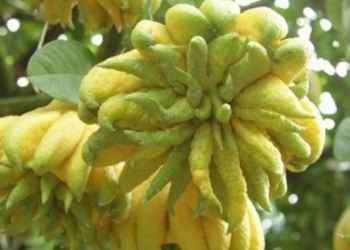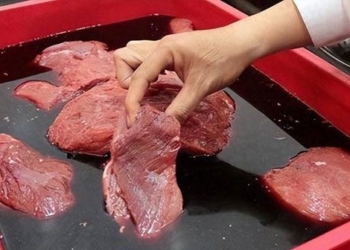Food poisoning caused by Staphylococcus aureus is the most common type of food poisoning. The bacteria can be transmitted through cold cuts, shrimp, fish, undercooked eggs, butter, milk, cream cakes, or from the hands and skin of food handlers.
Food Poisoning and What You Should Know
According to nutritionist Dr. Nguyen Thu Ha from Nam Saigon International General Hospital, acute or chronic food poisoning due to the accumulation of toxic substances can potentially lead to death. Typically, the incubation period ranges from 2 hours to 3 days before symptoms appear, depending on the type of toxin.
“Bacteria entering the food may not cause obvious spoilage; the food may still appear safe, but it can contain a large amount of harmful bacteria or toxins that cause poisoning,” Dr. Thu Ha shared.
Types of Food Poisoning
Food poisoning caused by Staphylococcus aureus: This is the most common type of poisoning, and the bacteria can be transmitted through cold cuts, shrimp, fish, undercooked eggs, butter, milk, cream cakes, or from the hands and skin of food handlers. Patients typically experience severe vomiting, without fever or diarrhea, appearing within a short time (under 8 hours) and lasting about 20 hours.

Food poisoning from Staphylococcus aureus can be transmitted through cold cuts and dairy. (Photo: Le Cam).
- Food poisoning caused by E. coli O157:H7: This occurs due to bacteria from livestock and primarily from water contaminated with feces carrying E. coli. Symptoms include abdominal cramps, diarrhea (which may contain blood), fever, and vomiting. The incubation period is 3-8 days, with recovery usually occurring within 10 days.
- Food poisoning caused by Shigella spp: This occurs from contaminated water, vegetables, and fruits. Initially, patients experience severe diarrhea, and after 24 hours may have bloody stools and significant fatigue. Young children may experience seizures. Antibiotic treatment is necessary.
- Food poisoning caused by Salmonella spp: The source of contamination is poultry, eggs, and contaminated food, which may include sour fruits or dried food. The bacteria are typically killed when food is thoroughly cooked. The incubation period ranges from 12 to 36 hours, with illness lasting 3-7 days.
- Food poisoning caused by Clostridium botulinum: This anaerobic bacterium is commonly found in canned food, packaged food, dried food stored for long periods, and pickled items.
- Aflatoxin fungal toxin: This toxin is found in nuts such as peanuts, soybeans, sunflowers, cashews, and corn; as well as in flours made from these contaminated grains. Malnourished children are particularly sensitive to the toxicity of Aflatoxin. Long-term exposure to Aflatoxin can lead to cancer.
- Hepatitis A viruses (HAV): These can be found in foods such as raw vegetables, cold-prepared foods, and shellfish from contaminated waters.
- Some natural toxins in food such as Tetrodotoxin found in puffer fish, Bufotoxin found in toads’ eggs, bile, liver, and secretions, and Solanum alkaloids from green potatoes.
- Mixed salads and dishes using raw vegetables often contain pathogens like amoebas (Entamoeba histolytica), causing amoebic dysentery, Shigella causing bacillary dysentery, and Escherichia coli causing diarrhea. Additionally, if vegetables contain significant pesticide residues, they can cause chemical poisoning.
Moreover, there are cases of food poisoning from other bacteria such as Campylobacter spp, Clostridium perfringens, Bacillus cereus, which cause abdominal pain and diarrhea but are relatively rare. Other agents that cause poisoning, such as pesticides on poorly washed fruits and vegetables, can lead to headaches, memory loss, respiratory failure, and seizures; these are often seen in rural areas and have a high mortality rate.

Thoroughly wash fruits and vegetables to prevent poisoning. (Photo: Le Cam).
Signs of Food Poisoning
Dr. Nguyen Thi Diem Ha, an emergency specialist at Ho Chi Minh City University of Medicine and Pharmacy, states that symptoms of food poisoning include nausea, repetitive or continuous vomiting, abdominal pain, diarrhea, bloody stools, fever, etc. Signs of dehydration include fatigue, thirst, dry mouth, muscle cramps, dizziness, confusion, dark yellow urine, and infrequent urination or no urination for several hours.
In severe cases, symptoms become more serious and present alarming signs like more than 6 loose stools a day, bloody diarrhea, vomiting blood, fever above 38.5 degrees Celsius that does not subside after 24 hours, severe abdominal pain, etc.
Upon noticing signs of food poisoning, you should quickly rehydrate (especially in the elderly and children) by drinking electrolyte solutions, and consuming light, low-fat foods. When signs of dehydration or alarming symptoms increase, you must promptly go to a healthcare facility for emergency treatment.
Preventive Measures Against Food Poisoning
The Ho Chi Minh City Center for Disease Control (HCDC) recommends several measures to help prevent food poisoning as follows:
- Eat cooked foods and check expiration dates: Consume only thoroughly cooked food and boiled water; limit raw or undercooked foods. Do not eat spoiled or expired food.
- Separate raw and cooked foods: Use separate utensils for preparing raw and cooked foods; if shared, clean thoroughly after each use.
- Cover food: When not refrigerated, cover food carefully to avoid dust and flies.
- Reheat: Leftovers should be heated to above 70 degrees Celsius before consumption.
- Refrigerate: Store food in the refrigerator; do not leave it at room temperature for more than 2 hours.
- Wash hands: Use soap before and after food preparation, before eating, and after using the restroom.
- Kitchen hygiene: Keep the kitchen and cooking utensils clean.
How to Manage Food Poisoning at Home





















































